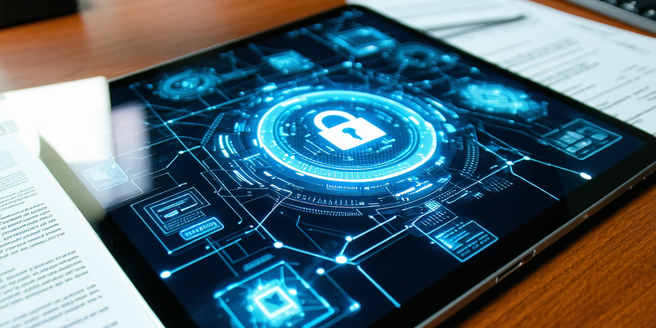Zebra Et51 Security Features Review

Introduction to Zebra ET51 Security Features
The Zebra ET51 is acclaimed for its exceptional security features, critical for today’s mobile workforce. Its robust framework is designed to withstand various threats, ensuring the safe handling of sensitive information. As businesses face sophisticated cyber risks, the ET51 provides a solid foundation of secure data management. Its security features include data encryption, ensuring information remains confidential and secure. Additionally, user authentication mechanisms guarantee that only authorized personnel have access. Remote management capabilities allow IT teams to monitor and manage devices efficiently, minimizing security gaps. The device also incorporates role-based access controls, allowing for sensitive information to be restricted based on roles. As organizations strive to protect their data, the Zebra ET51’s comprehensive security features prove indispensable, making it a reliable choice for industries that prioritize information safety.
Data Encryption and Protection
Data encryption is at the core of the Zebra ET51’s security offerings, providing a protective shield over sensitive information. This feature encrypts data both in transit and at rest, ensuring that it remains inaccessible to unauthorized entities. Through strong encryption protocols, the ET51 converts readable data into a secure format that can only be decrypted by authorized users. This method of protection is crucial, especially for organizations handling proprietary data, client information, or confidential strategies, as it helps prevent data breaches. The ET51’s encryption capabilities are complemented by consistent updates, which address potential vulnerabilities and keep the encryption methods robust against emerging threats. Furthermore, these encryption measures are designed to comply with industry standards and regulations, offering organizations peace of mind that their data processes meet legal requirements.
User Authentication Mechanisms
Authentication is a critical aspect of securing the Zebra ET51, featuring advanced user authentication mechanisms to ensure that only authorized personnel can access the device. The ET51 supports multifactor authentication (MFA), combining two or more verification methods, such as passwords, biometrics, or security tokens, to grant access. This layered approach greatly reduces the risk of unauthorized access, as potential intruders would need to bypass multiple security checks. The device’s biometric authentication options, including fingerprint scanning, add another level of security by utilizing unique biological traits, which are not easily replicable. The ET51’s user authentication features also allow IT administrators to set stringent password policies and access conditions, further safeguarding against unauthorized use. These mechanisms are essential in environments where secure data handling is crucial, providing organizations with confidence in their information security.
Remote Management and Monitoring
The Zebra ET51 offers powerful remote management and monitoring capabilities, essential for maintaining security across devices used in diverse and challenging environments. Through remote management, IT teams can control and monitor the ET51 tablets from a central location, deploying updates, patches, and security configurations as needed. This centralized approach allows for efficient handling of potential security threats, ensuring devices are consistently aligned with security policies. The remote monitoring features enable real-time tracking of device locations, usage patterns, and health status, empowering administrators to swiftly address any irregularities or suspicious activities. These capabilities eliminate the need for physical interventions, saving on travel costs and reducing device downtime. As part of a comprehensive security strategy, remote management and monitoring help organizations maintain compliance and optimize the security of their device fleet.
Role-Based Access Controls
Role-Based Access Controls (RBAC) provide a crucial security layer for the Zebra ET51, enabling organizations to manage user permissions based on roles within the company. With RBAC, access to sensitive data and system functions can be restricted to individuals whose job responsibilities require it, minimizing the risk of unauthorized information access. Each role within the organization is defined with specific access rights, allowing for precise control over who can view or modify data. This compartmentalization of access not only enhances security but also supports compliance with data protection regulations by ensuring that only necessary personnel handle specific information. Consequently, RBAC in the Zebra ET51 mitigates internal security risks by preventing misuse of data and maintains the integrity of sensitive information, while still allowing efficient operation and collaboration within the organization.